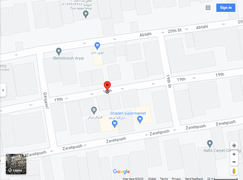Bromelain- and Silver Nanoparticle-Loaded Polycaprolactone/Chitosan Nanofibrous Dressings for Skin Wound Healing
Bromelain- and Silver Nanoparticle-Loaded Polycaprolactone/Chitosan Nanofibrous Dressings for Skin Wound Healing
cutaneous wound is caused by various injuries in the skin, which can be wrapped with an efficient dressing. Electrospinning is a straightforward adjustable technique that quickly and continuously generates nanofibrous wound dressings containing antibacterial and anti-inflammatory agents to promote wound healing.

Abstract
A cutaneous wound is caused by various injuries in the skin, which can be wrapped with an efficient dressing. Electrospinning is a straightforward adjustable technique that quickly and continuously generates nanofibrous wound dressings containing antibacterial and anti-inflammatory agents to promote wound healing. The present study investigated the physicochemical and biological properties of bromelain (BRO)- and silver nanoparticle (Ag NPs)-loaded gel-based electrospun polycaprolactone/chitosan (PCL/CS) nanofibrous dressings for wound-healing applications. Electron microscopy results showed that the obtained nanofibers (NFs) had a uniform and homogeneous morphology without beads with an average diameter of 176 ± 63 nm. The FTIR (Fourier transform infrared) analysis exhibited the loading of the components. Moreover, adding BRO and Ag NPs increased the tensile strength of the NFs up to 4.59 MPa. BRO and Ag NPs did not significantly affect the hydrophilicity and toxicity of the obtained wound dressing; however, the antibacterial activity against E. coli and S. aureus bacteria was significantly improved. The in vivo study showed that the wound dressing containing BRO and Ag NPs improved the wound-healing process within one week compared to other groups. Therefore, gel-based PCL/CS nanofibrous dressings containing BRO and Ag NPs could be a promising solution for healing skin wounds.




ارسال به دوستان